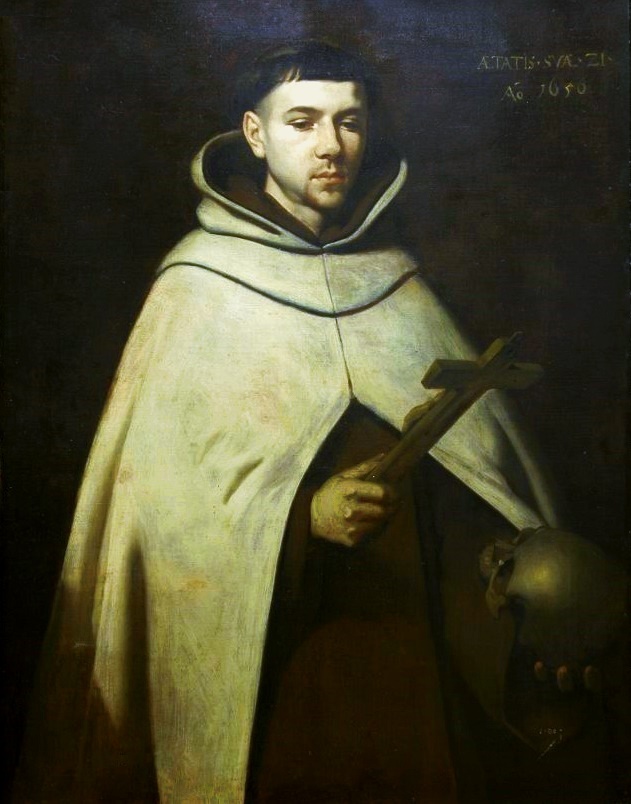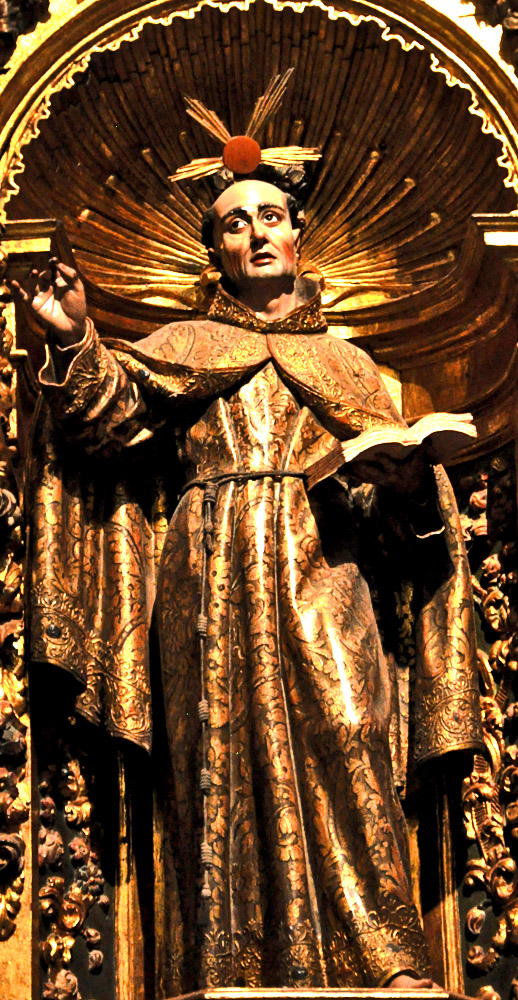Most portraits of John of the Cross have him in the Discalced Carmelite habit: a white mantle over a dark brown tunic and scapular. To distinguish him from other Discalceds, most images refer to his name by giving him a cross or crucifix.
Prepared in 2018 by Richard Stracke, Emeritus Professor of English, Augusta University.
HOME PAGE

Zurbarán's portrait of St. John of the Cross, 1656 (See the description page.)

A statue of the saint in a 1742 retable (See the description page.)

Bernardo Falconi's statue in the Scalzi Church, Venice. (See the description page.)
ATTRIBUTES
- Cross or crucifix
- Lilies1
DATES
- Feast day: November 24
BIOGRAPHY
- Butler, IV, 413-18
LITERATURE
- John of the Cross, "Verses Written About an Ecstasy of High Contemplation."
- For John of the Cross's influence on art, see Davies, "El Greco and the Spiritual Reform Movements in Spain."
NOTES
1 I found just one painting where lilies are used as an attribute: Nicolò Lorenese, The Anticipation of the Coming of Christ, 1686, in Rome's Santa Maria della Vittoria, the same church that houses Bernini's famous sculpture of St. Teresa. Lilies are a traditional way of referring to a saint's chastity. The painting is published in One Hundred Saints (248); a very bad photograph of it is on this page at Wikimedia Commons (retrieved 2021-12-08).